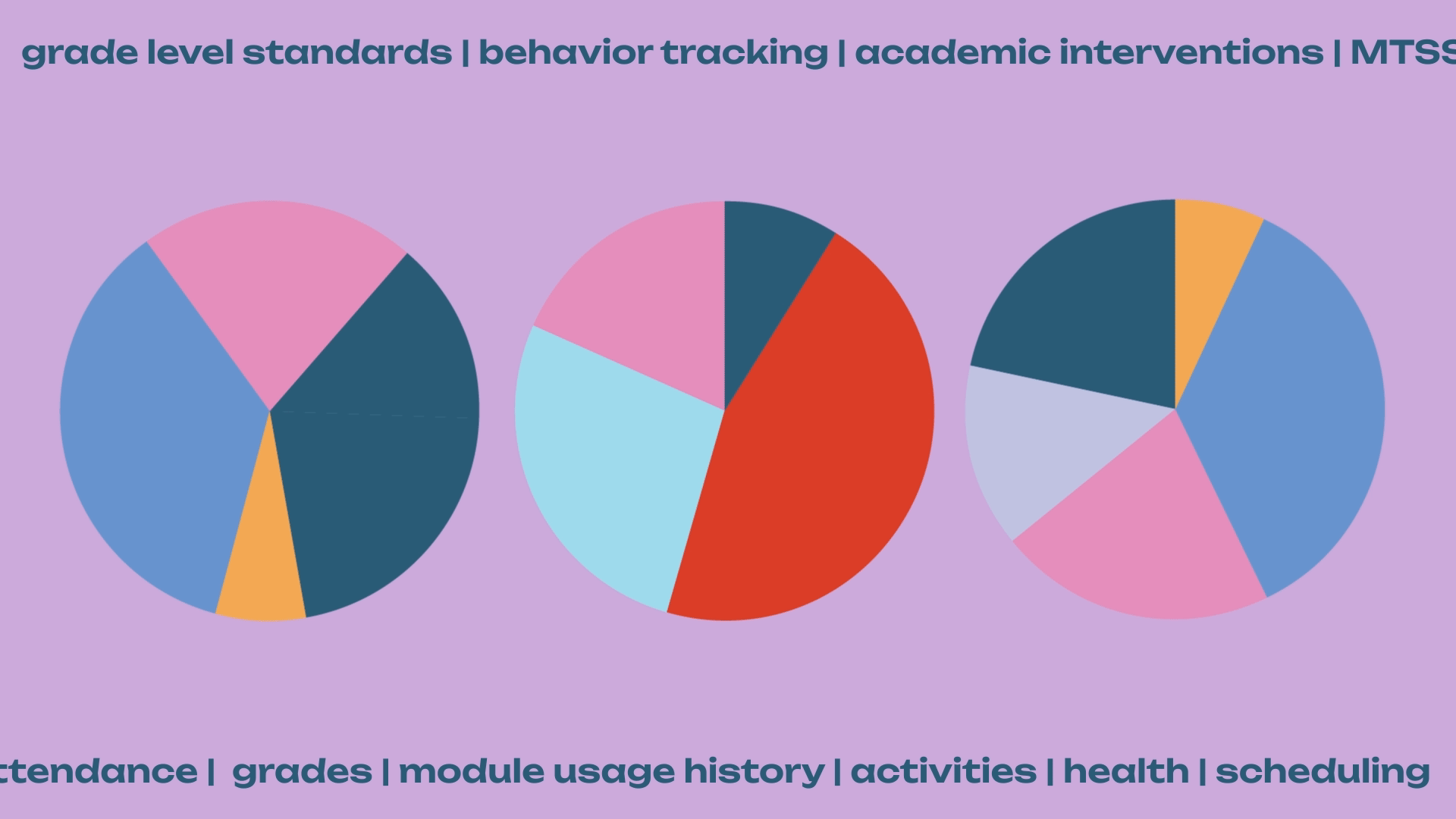
In the era of personalized, differentiated education, teachers are asked to translate curriculum into 25 (give or take) tailor-made plans for each student.
It’s a lot to ask.
Educational data analytics can help automate student success tracking without sacrificing care, creativity, and teachers’ professional guidance. Let’s dive in.
What data do teachers use to track student success?
Educational data analytics takes the wealth of data in a student information system (SIS) or enterprise resource system (ERP) and creates visual representations. From these visuals, analysis follows much more quickly than with traditional methods.Tracking progress toward academic standards
Each student progresses at different rates. This means teachers, educational coaches, and administrators are tracking potentially hundreds of different students, each at a different point in their journeys toward grade-level standards mastery.While grade level standards give us a goal to aim for, performance data provides a snapshot of achievement today. With those two points in mind, teachers map a path to student growth.
Tracking students in need of support
Student success tracking includes more than academic data. Behavior tracking (both frequency and types of infractions) help educators determine whether a student needs interventions of many types.Both behavior and academic interventions include multi-tiered systems of supports (MTSS). Different students will need different levels of intervention, and educational data analytics for each student speed up tracking those tiers of support—including students moving from a more intense intervention tier to one closer to grade level.
Why longitudinal (year-over-year) data matters
Tracking progress year-over-year using longitudinal data is perhaps most important to tracking student success.Educational data analytics and the visual representations created during that process make it easier to interpret longitudinal data at a glance. Because the SIS houses decades of data, teachers can analyze growth patterns and compare them to a student’s current performance and habits. Spotting changes in growth patterns is an important part of catching students before they fall into a pattern of negative behavior or academics.
Why tracking student success matters
Tracking student success is important work in K12 schools. An expert teacher can interpret educational data analytics to chart a path forward toward growth for every single student. The highly visual and intuitive data stories housed in your SIS are valuable—and automating the process means more precious time for teaching, learning, and collaborating with students.At the administrative level, aggregated data informs district-wide decisions about initiatives and programs.
The different levels of educational data analytics, whether shown by district, school, or drilled down to individual classroom levels, provide the knowledge educators need to make informed decisions. It’s your district’s SIS data, now with tools to interpret it visually.
Follow-up resource: Learn more about educational data analytics
See how visually presenting data can help educators gain instant insight into student success.WHAT'S NEXT FOR YOUR EDTECH? The right combo of tools & support retains staff and serves students better. We'd love to help. Visit skyward.com/get-started to learn more.

|
Erin Werra Blogger, Researcher, and Edvocate |
Erin Werra is a content writer and strategist at Skyward’s Advancing K12 blog. Her writing about K12 edtech, data, security, social-emotional learning, and leadership has appeared in THE Journal, District Administration, eSchool News, and more. She enjoys puzzling over details to make K12 edtech info accessible for all. Outside of edtech, she’s waxing poetic about motherhood, personality traits, and self-growth.



